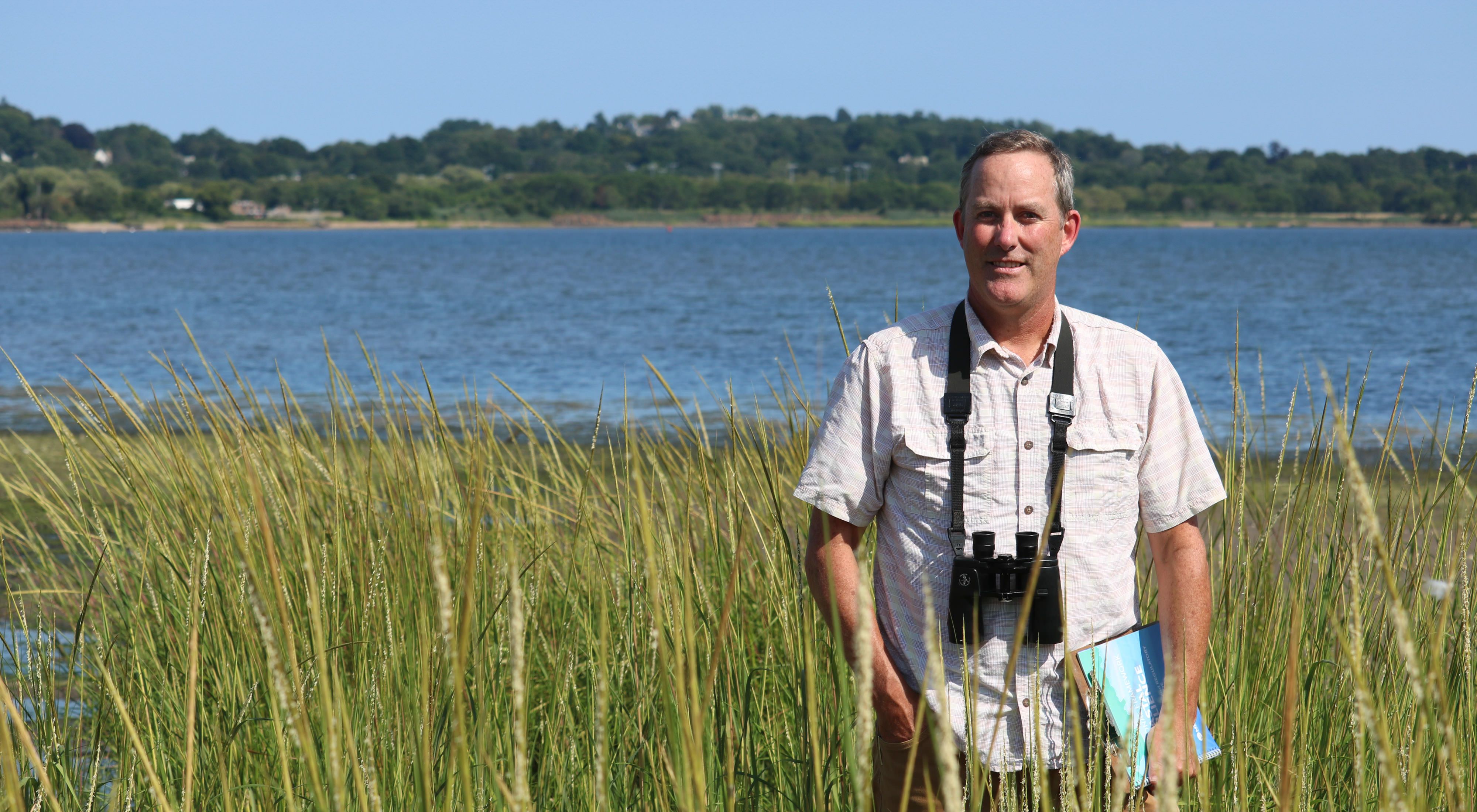Our Science Travels
The Connecticut Chapter shares its strengths with neighbors near and far.
Working across borders is not new for The Nature Conservancy in Connecticut; it’s a tradition.
Chapter hallmarks—initiatives such as nitrogen reduction and seagrass restoration in Long Island Sound, and restoration of disease-tolerant American elms along the Connecticut River—follow where nature leads rather than stopping at boundaries people draw.
In 2017, the tradition continued, with Connecticut Conservancy staffers taking skills and expertise to new locations where they’re having big impacts.
The Makings of an MVP
It was an intersection that had been a decade in the making. In Connecticut, Conservancy Director of Science Adam Whelchel had created and led the evolution of a “Community Resilience Building ” approach that had touched down in 40 communities representing more than 1 million residents in Connecticut alone. Numerous communities in other states also adopted the approach.
Whelchel’s perspective—which emerged with from the Coastal Resilience climate preparedness program he had helped pioneer starting in 2007—was helping communities identify vulnerabilities, strengths and meaningful actions they could take.
Meanwhile, just to the north, Steve Long, the Conservancy’s Massachusetts government relations director, had put in years of work to advance climate policy in the Commonwealth. His efforts yielded—among other things—a crucial executive order on climate from Gov. Charlie Baker in 2016.
Long knew whom to call when, as part of Baker’s executive order, the opportunity came to assistMassachusetts with a program designed to help communities prepare for climate impacts. He called Whelchel.
Fast forward to late 2017, and Whelchel and the Conservancy are training 250 professionals to work with the Massachusetts communities participating in the program, known as the Municipal Vulnerability Preparedness (MVP) program.
The goals: enhance safety, avoid costs and conserve natural resources in the face of extreme weather and climate by evaluating vulnerabilities and preparing adaptation plans. The trainings include a focus on the benefits of nature-based solutions—like salt marshes and floodplains.
In all, 66 communities—20 percent of the Commonwealth—will get state funding to work with these trained professionals on the Community Resilience Building Workshop process. The Conservancy hopes to replicate the MVP approach in as many as 10 states.
Meanwhile, the Coastal Resilience platform has been launched in 17 states and 8 nations, including, at the end of the summer, Indonesia. “We always dreamed big with our resilience work,” Whelchel says. “Even so, the scale to which this work has grown is profoundly gratifying. Like my colleagues, I try to make lasting positive impact, and we really are seeing this now with people and places.”
Good Neighbors Make Good Fishways
Whelchel was hardly the only Connecticut Conservancy staffer crossing state lines in 2017 to help bring about lasting results.
Fresh off major dam-removal successes on the Jeremy and East Branch Eight Mile Rivers in Connecticut and the Pawcatuck River on the Rhode Island-Connecticut border, Sally Harold headed east—across Long Island Sound—to help complete another river project over the summer.
Harold—the Connecticut Chapter’s director of river restoration and fish passage—had been collaborating with the Conservancy’s Long Island Chapter and the New York State Department of Environmental Conservation (DEC) since 2014 on the project, construction of a fishway at Beaver Lake dam in Mill Neck, Long Island.
Beaver Lake was once an estuary open to Long Island Sound, but as the area developed, a dam was constructed to hold back water in the estuary and create what’s now known as Beaver Lake. The dam was enough of a barrier that during most flows, migratory fish—namely blueback herring and alewife—were unable to get over it to spawn in the fresh water beyond.
These species are critical forage fish for other fish, including tuna and striped bass. They also help sustain birds and mammals.
“Returning these fish to their historic spawning grounds is one step in returning the health and abundant natural diversity of Long Island Sound,” Harold says.
Initial efforts to restore fish passage at the dam began in 2003, but it wasn’t until 2014 when The Nature Conservancy secured funding through the National Fish and Wildlife Foundation Long Island Sound Futures Fund, that necessary engineered plans were developed and permits secured. Additional support for the project was secured through Friends of the Bay, the U.S. Fish and Wildlife Service, DEC, the Conservancy in Connecticut and Long Island and private donors.
“The Beaver Dam project highlights one of the things I love most about The Nature Conservancy. We’re eager to cross borders to meet a need,” Harold says. “Like our many partners, we know we can achieve the best conservation results by working together.”
